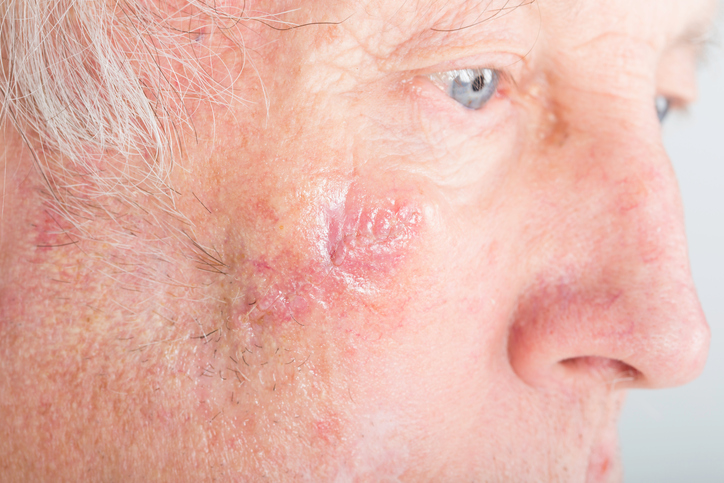What is Mohs Surgery?
Mohs surgery is a highly specialized surgical and pathologic technique used for the removal of non-melanoma skin cancers, developed by Dr. Frederic E. Mohs and first performed in the 1930s. During Mohs surgery, cancer is removed from your skin, layer by layer until all cancerous cells have been removed. Allowing the dermatologic surgeon to function as both the surgeon and the pathologist, Mohs surgery is commonly used for cancers that have a high risk of reoccurrence.
Benefits of Mohs Surgery
Mohs surgery offers the highest cure rates for all non-melanoma skin cancers. During Mohs surgery, layers of cancerous skin are progressively removed and examined until only cancer-free skin tissue remains. This technique allows for complete removal of the skin cancer while minimizing the removal of healthy skin.
The technical precision and degree of expertise in tumor assessment of a Mohs surgeon contributes to this superior tissue handling and sparing. Mohs surgeons are trained beyond their specialty in dermatology by undergoing a one- to two-year fellowship in programs approved by the American College of Mohs Micrographic Surgery.
For certain cases of the most common types of skin cancer – squamous cell carcinoma and basal cell carcinoma – the cure rate can be as high as 99%.
Is Mohs Surgery Right for Me?
When working with your dermatologist, he or she will consider many factors before determining whether Mohs surgery is right for you. These include the type of skin cancer, the location of cancer, and your overall health. Mohs surgery is ideally suited for sensitive areas such as the face, as well as high-risk non-melanoma skin cancers. Skin cancers are typically considered high risk if they meet some or all of the following criterion:
- Recurrent non-melanoma skin cancer
- Tumors larger than 2 cm in size
- Tumors that regrow following previous treatment
- Tumors in high-risk locations or locations where tissue preservation is imperative
- Tumors with poorly defined borders
- Tumors in immunosuppressed patients
- Others based on a consultation with a dermatologist Board Certified by the American Board of Dermatology
Mohs surgery has many advantages, however, it is not the right treatment for everyone. Work with your dermatologist to determine if Mohs surgery is right for you and your unique situation.
What to Expect
Mohs surgery is most commonly performed as an outpatient procedure under local anesthesia. While patients remain awake during Mohs surgery, it is recommended that they bring a friend or spouse with them on the day of the surgery.
After the affected tissue is removed by the Mohs surgeon, a pressure dressing will be placed on the wound. The patient will then go to a waiting room area for 20 – 45 minutes while the tissue is processed and analyzed, examined carefully for remaining cancer cells. If additional cells are discovered, the Mohs surgeon then precisely removes additional tissue only in the area of the residual tumor, repeating this process until all tissue is free of cancer cells.
Postoperative care instructions will then be given to the patient based on the best options for his or her situation. It is uncommon to experience significant pain that cannot be resolved using acetaminophen for any discomfort.
A minimum of yearly ongoing visits are necessary for patients with both new and recurrent cancer, as 50% of patients with non-melanoma skin cancer will experience additional skin cancer within five years.
How Mohs Surgery is Performed?
Mohs surgery has the highest cure rates for all non-melanoma skin cancers. For certain cases of the most common types of skin cancer — squamous cell carcinoma and basal cell carcinoma — the cure rate can be as high as 99 percent.
About U.S. Dermatology Partners Brodie Lane
At U.S. Dermatology Partners Brodie Lane, formerly Evans Dermatology, our team of medical experts provides the very latest in dermatology care for the entire family, along with state-of-the-art treatment for skin diseases. As the leading treatment center of psoriasis in Central Texas and the largest dermatology practice serving South Austin, Texas we focus on caring for your medical needs including acne, psoriasis, eczema, and skin cancer, while also providing high-quality cosmetic services. Our patients enjoy compassionate and efficient care in our comfortable offices.

